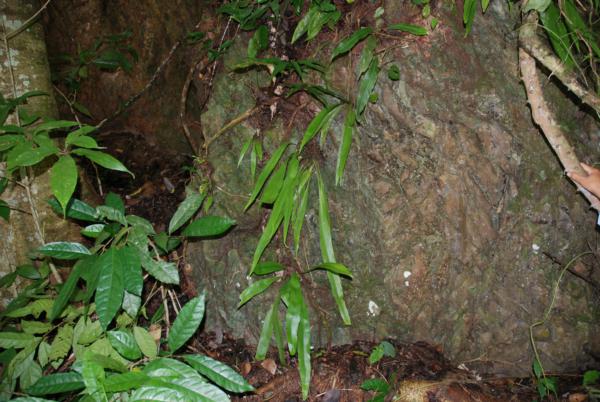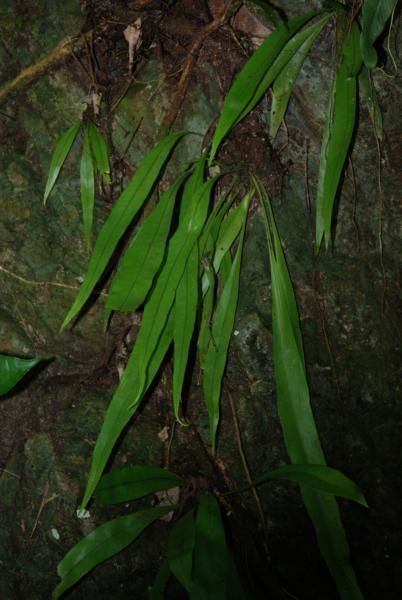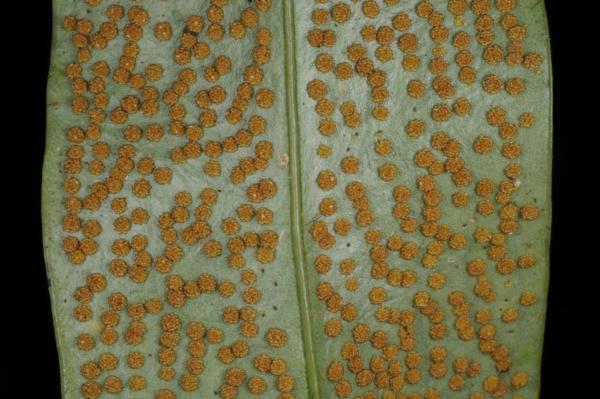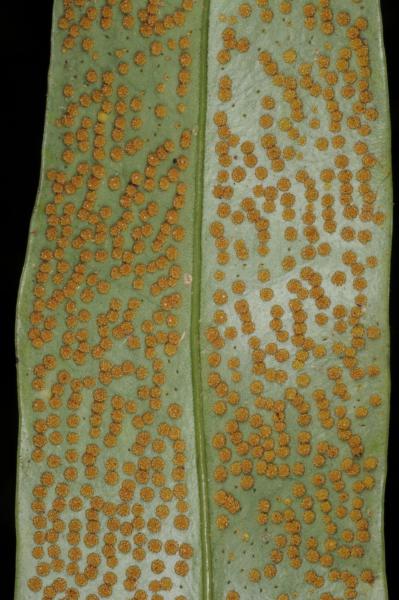
Microsorum punctatum (L.) Copel.
Family
Polypodiaceae
Nomenclature
Microsorum punctatum (L.) Copel., Univ. Calif. Publ. Bot. 16: 111. 1929; Ching, Bull. Fan Mem. Inst. Biol. 4: 307. 1933; Tardieu & C.Chr., Fl. Indo-Chine 7(2): 483. 1941; Holttum, Rev. Fl. Malaya ed. 1, 2: 179. 1955 [‘1954’]; Holttum, Dansk Bot. Ark. 20: 20. 1961; Holttum, Dansk Bot. Ark 23: 231. 1965; Seidenf., Nat. Hist. Bull. Siam Soc. 19: 86. 1958; Tagawa, J. Jap. Bot. 38: 327. 1963; Tagawa & K.Iwats., SouthE. Asian Stud. 3(3): 76. 1965; Tagawa & K.Iwats., SouthE. Asian Stud. 5: 52. 1967; Tagawa & K.Iwats., Acta Phytotax. Geobot. 23: 52. 1968; Tagawa & K.Iwats., Fl. Thailand 3: 528. 1989; Nooteboom, Blumea 42: 353. 1997; Bosman et al., Fl. Males., Ser. II, Ferns and Fern Allies 3: 121. 1998; Boonkerd & Pollawatn, Pterid. Thailand: 255, 280. 2000. – Acrostichum punctatum L., Sp. Pl. ed. 2: 1524. 1763. – Pleopeltis punctata (L.) Bedd., Suppl. Ferns Brit. Ind.: 22. 1876; Bedd., Handb. Ferns Brit. India: 357, f. 201. 1883. – Polypodium punctatum (L.) Sw., Schrad. J. Bot. 1800(2): 21. 1801; Christ, Bot. Tidsskr. 24: 104. 1901; C.Chr., Bot. Tidsskr. 32: 348. 1916. – Type: Fothergill s.n., China.
Description
Rhizome creeping, 3–5(–8) mm diam., dark or glaucous on the surface, bearing closely spaced fronds, scaly; scales narrowly oblong-subtriangular, gradually narrowing from ovate basal portion towards long-attenuate apex, concolorously dark greyish-brown, clathrate, the surface wall of constituent cells not transparent, margin distinctly toothed, 1.5–8 by 0.5–3 mm. Stipes not distinct from laminae or up to 12 cm long, scaly at base, stramineous to greenish. Laminae narrowly oblong to lanceolate, gradually narrowing towards acute apex or moderately acute without a pointed apex, narrowing towards attenuate base and decurrent downwards to form wings of stipes sometimes nearly to the base, 10–163 cm long, (1.5–)3–6(–15)cm broad; midrib raised on both surfaces, other veins obscure, finely anastomosing to form copious areoles; subcoriaceous, the margin of laminae sometimes revolute. Sori small, round, many, scattered on the whole under surface of laminae .
Distribution in Thailand
NORTHERN: Chiang Mai, Chiang Rai, Lampang, Tak, Phitsanulok; NORTH-EASTERN: Phetchabun, Loei; EASTERN: Chaiyaphum, Nakhon Ratchasima; SOUTH-WESTERN: Kanchanaburi, Phetchaburi, Prachuap Khiri Khan; SOUTH-EASTERN: Prachin Buri, Chon Buri, Chanthaburi, Trat; PENINSULAR: Ranong, Surat Thani, Phangnga, Phuket, Krabi, Nakhon Si Thammarat, Trang, Yala.
Distribution in Laos
Khammouane, Luang Phrabang.
Distribution in Cambodia
Kampot, Koh Kong.
Wider Distribution
Throughout the tropics of the Old World, W Africa to Tahiti.
Ecology
On mossy rocks or tree trunks usually in dry open places or in light shade, common at low to medium altitudes throughout Thailand.
Proposed IUCN Conservation Assessment
Least Concern (LC). This species is widespread and not under any known threat.
Voucher specimens - Thailand
Middleton et al. 4797, Phetchaburi, Kaeng Krachan National Park (E); Middleton et al. 4294, Surat Thani, Khao Photha Daeng Lam (E); Middleton et al. 4385, Nakhon Si Thammarat, Khao Luang National Park (E).
Voucher specimens - Cambodia
Viboth R5-72, Koh Kong, Thma Baing (P).
Habit
Habit
Sori
Lower frond surface with sori
Site hosted by the Royal Botanic Garden Edinburgh. Content managed by Stuart Lindsay, Gardens by the Bay, Singapore and David Middleton, Singapore Botanic Gardens. Last updated 24 January 2012



